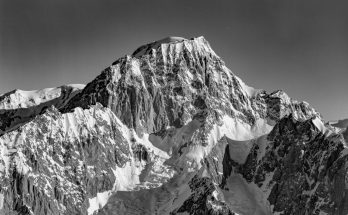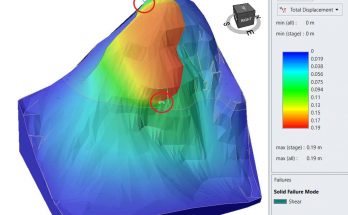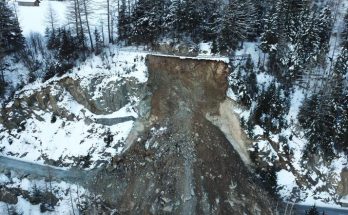Marie Charrière
Supervisor: Prof. Michel Jaboyedoff
Expert: Ing. Geol. Corey Froese
The Frank Slide (Alberta, Canada) is one of the rock avalanches which was the most studied throughout the History of the research on this kind of landslides. Indeed, it was already analyzed just after its occurrence in 1903, where 70 people died. Nevertheless, a complete description of its deposit was never conducted.
Hence, this study proposes the results of such an analysis based on field survey and numerical methods. The description of the deposit is conducted following several parameters. The spatial pattern of the surface’s granulometry, resulting from a field sampling, is complete by a remote sensing analysis which uses morphological filtering. It appears that globally the bigger blocks are found in the central part of the deposit. Granulometrical indicators, such as the diameters corresponding to each volumetric frequency and the uniformity and curvature coefficients, present a partially sinusoidal spatial distribution in the longitudinal direction of the propagation.
In addition, the spatial distribution of the geological formations, which conserve the original stratigraphic sequence, is enhanced. It allows proposing a mode of collapse and propagation of the mass. The hinge area, which is supposed to have been the weakest
point of the Turtle Mountain anticline, seems to have been the starting point of a shearing mechanism. After the failure, during the motion, the normal limb overrode the inverse limb. Thus, the Banff and the Lower Livingstone formations, which constituted the hinge, travelled at the front of the moving mass and reached the farthest distance. In this configuration, the Upper Livingstone formation, which was initial located at the top of
Turtle Mountain, must have been positioned at the end of the rock avalanche during the propagation. This can explain its presence in the proximal part of the deposit. The Mt-Head formation was initially positioned at the toe of the fell mass. It was hence overridden by the other part of the moving mass. Its actual position on the deposit surface suggests that it gradually stopped during the motion.
This study is also constituted of morphology’s analysis of the deposit. Based on GIS results such as, among others, shaded relief map, roughness index map, azimuth map and plan curvature map, it highlights the presence of morphological features like longitudinal ridges, flowbands, hummocks and compression ridges. Moreover, a heterogeneity of the flow in enhanced by the distinction of the three different behaviors. This allows understanding the process of transport.
The Sloping Base Level Method (SLBL) is also used in this study. It permits to reconstruct the original topography of the mountain and to simulate the spatial distribution of the deposit’s thickness. Furthermore, it leads to an upward revaluation of the volume of the Frank Slide avalanche to approximately the double of the conventional value of 30 millions cubic meters.



